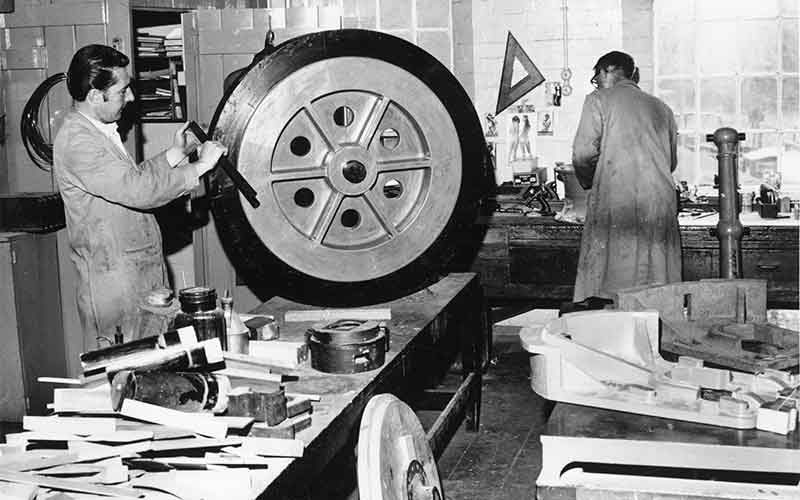Trevor worked at Sampson’s Foundry, which would make machine parts for Underfall Yard. Pattern makers at the yard’s in-house workshop built wooden patterns, with the foundry would then use to make the moulds for castings.
The Foundry – In this recording, Trevor describes the casting process and his role at the foundry.
 The Casting Process
The Casting Process
- A wooden replica of the desired machine part, known as a pattern, is carved.
- The pattern is brought to a foundry and pressed into densely-packed, moist sand.
- The impression in the sand creates a mold, which is filled with a molten metal such as iron.
- The metal cools and solidifies. It also shrinks slightly as it solidifies, which is why patterns are often made to be slightly larger than the finished machine part.
- Once the metal part is safe to remove from the mold, it is filed or cut to remove any excess pieces. This work would often happen in fitting workshops, such as the Docks Maintenance Workshop at Underfall Yard
This interview was recorded in 2015 as part of the Oral History Project, coordinated by Underfall Yard Trust.
Read more about Underfall Yard’s Recovery and Reinstatement Project…
TRANSCRIPT – The Foundry
So you got to start with mounting facilities, you got to have men that knows how to handle these mind as well, well cause we had non ferrous and ferrous metals. With iron’s a different process than non ferrous. With iron it’s in a big cupola – that’s a big furnace – and they feed all the stuff in at the top, and tap the molten metal out at the bottom, it goes into ladles, and then you, or the Foreman usually takes it round and pours it in — and we could cast up to 4 tonne casting, and we could also cast little ones like that but as I said, you got to know, you got men that know, they’ve been doing it all their life. With non ferrous metals, they usually melt down in the furnace but they put the pot in the furnace but they put the ingots and what not in the, in the pot, and then it melts in the pot and they lift the pot out and pour with the shanks and what not from that. But other foundries are bit different, it’s a bigger, bigger ring, ours wasn’t a big foundry but um we could do sort of 10 tonne of metal cast in an afternoon, I mean, that’d take about 2-3 hours to cast 10 tonne of castings…
